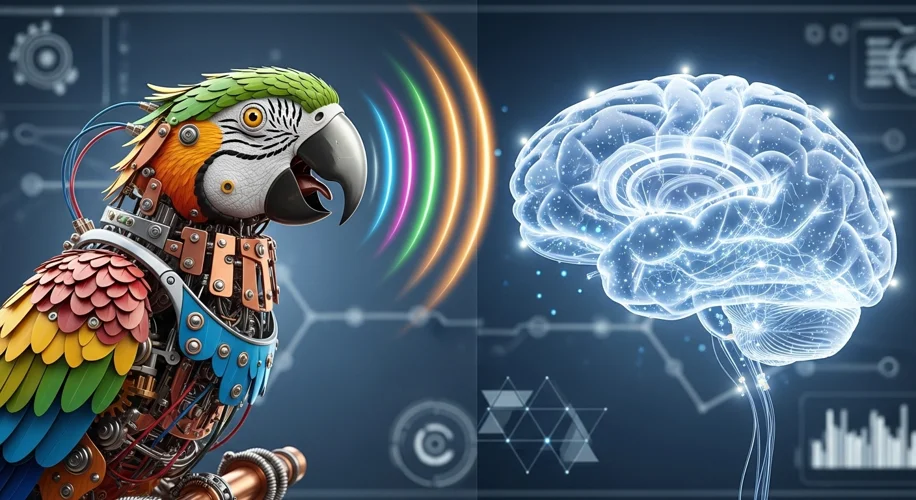As someone who’s spent decades in the tech trenches, I’ve seen AI evolve from simple calculators to complex systems that can write, code, and even create art. But a question keeps surfacing, one that gets to the heart of what it means to be intelligent: What’s the difference between an AI that can expertly mimic human language and one that truly understands?
This is where the concept of the “stochastic parrot” comes in, a term coined by researchers Emily Bender, Timnit Gebru, Angelina McMillan-Major, and Margaret Mitchell. Think of it this way: A stochastic parrot is an AI language model that, when prompted, strings together words based on patterns it learned from massive amounts of text data. It’s incredibly good at predicting the next word in a sequence, much like a parrot can mimic human speech after hearing it repeatedly. The output can sound remarkably coherent, even insightful, but it doesn’t necessarily imply genuine comprehension.
So, what does “understanding” really mean in this context? It’s a question philosophers and scientists have wrestled with for centuries, but when we talk about AI, it often comes down to a few key aspects:
- Grounding: Does the AI connect language to the real world? When we say “apple,” do we mean the fruit, or just a collection of letters that often appear near words like “red,” “eat,” or “tree”? True understanding implies a connection to experiences, objects, and concepts in the physical or conceptual world.
- Intent and Meaning: Does the AI have its own goals or intentions? Or is it solely driven by the objective to fulfill the prompt based on statistical probabilities?
- Consciousness and Subjective Experience: This is a much deeper philosophical debate, but it touches on whether an AI can have internal states, feelings, or a sense of self. Current AI, by all accounts, lacks this.
Consider an example. If you ask an AI to describe the feeling of sadness, a stochastic parrot might generate text about tears, loss, and melancholy by drawing from countless stories and articles. It can assemble the words beautifully. But does it feel sadness? No. It doesn’t have the lived experience, the biological and emotional underpinnings that give that word meaning to humans.
From my perspective, the distinction is crucial, especially as AI becomes more integrated into our lives. We need to be clear about what these systems are capable of. They are powerful tools for generating text, summarizing information, and assisting with tasks. However, attributing genuine understanding or consciousness to them based on their linguistic output alone is a leap we shouldn’t make. It’s like mistaking a masterful illusionist for someone with actual magical powers. The trick is incredibly convincing, but it’s still a trick, based on practiced movements and misdirection.
As we continue to develop and deploy AI, it’s essential that we foster a nuanced understanding of its capabilities and limitations. We must ask ourselves: Are we building tools that augment human intelligence, or are we inadvertently creating systems that can fool us into believing they possess a level of sentience they do not? The implications for trust, responsibility, and the future of human-AI interaction are significant. It’s a conversation worth having, grounded in reality, not just impressive output.

